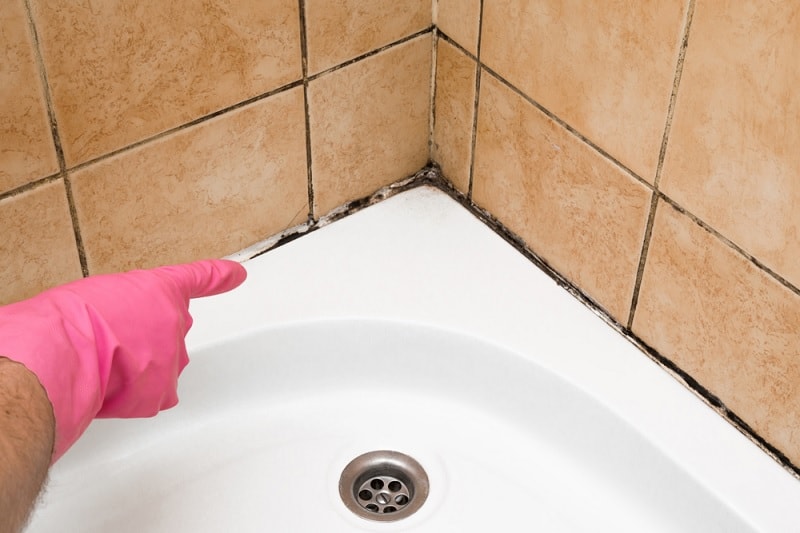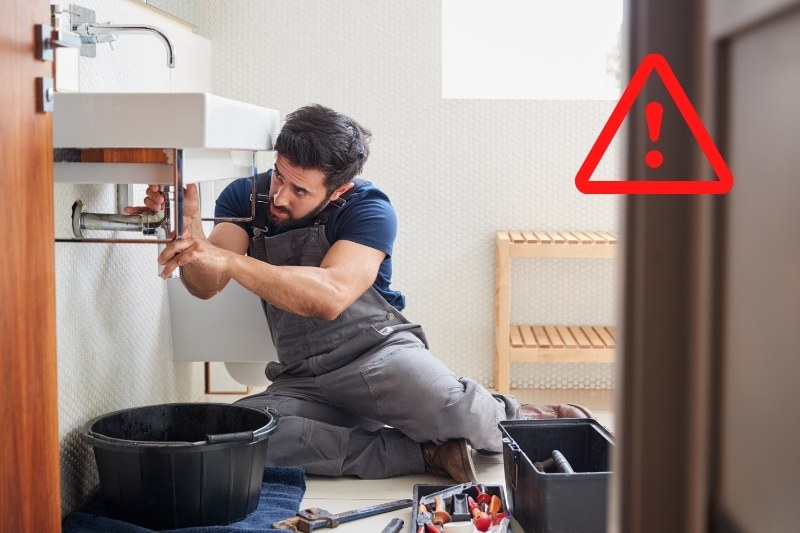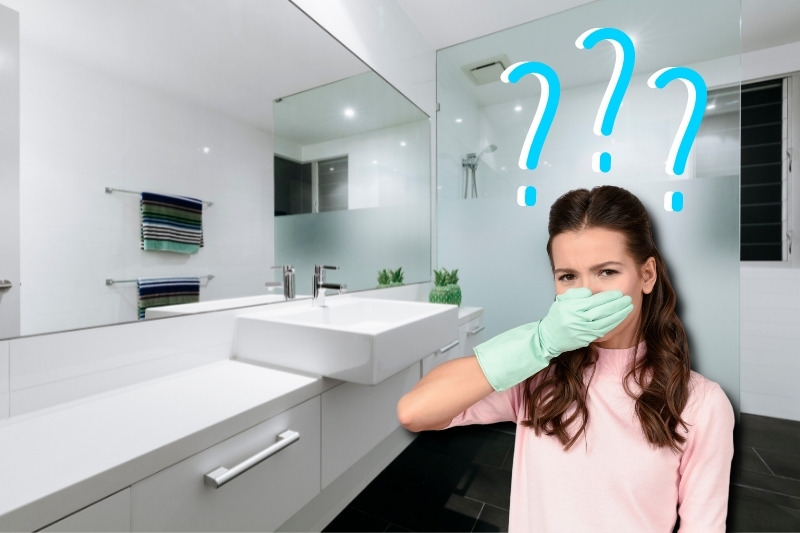You’ve probably walked into your bathroom at some point and thought “what is that weird smell?”
Unfortunately, bathrooms are highly susceptible to developing a stagnant smell over time.
Water and steam are produced in the shower, sink and toilet. Not to mention the sitting water that stays on surfaces after using the shower or sink.
In addition to this, plumbing often becomes damaged or blocked, leading to unpleasant smells.
In this article we’ll look at potential causes for stagnant smells, how you can treat them and how you can stop them coming back.
Cause 1: Mould Growing in and Around the Shower

The steam and running water in our showers create the perfect, humid environment for mould to form. Mould can develop on tiles, in caulking, on a shower curtain or a bath mat.
Condensation gets into all of these places. It’s impossible for us to remove it all, which can lead to mildew. Mildew causes a strong, musty smell which is difficult to cover up.
The good news is that mould is easy to identify as it’s characteristically a black, splotchy stain and tends to grow in corners or material fibres.
How to treat it
- Firstly, launder your shower curtain and bath mat.
- You may need to wipe your shower curtain down if it’s plastic but if not, pop it in the washing machine with half a cup of vinegar.
- Then you’ll need to tackle the shower itself. As well as spot-treating mouldy patches, give the whole shower a clean over to prevent further growth.
- Mix a solution of equal parts water and vinegar. You can also use bleach instead of vinegar, in which case, follow the instructions on the bottle.
- Use a spray bottle or a cloth to apply the solution to the shower and bath surfaces.
- Let the solution sit for at least 30 minutes, or ideally, overnight. For tough patches of mould, apply pure vinegar to the area and cover with clingfilm.
- Wipe the surfaces with a cloth and rinse over with water.
- Dry the surfaces with a clean towel, making sure they’re completely dry.
How to prevent it
- Choose a moisture-resistant material for your shower curtain such as polyester.
- Make sure you don’t have any surfaces where water can pool and stagnate.
- Use a squeegee on the tiles and door after showering to encourage water flow.
- Open windows after showering, if possible.
- Use an extractor fan while you’re showering.
- Hang up your towels and bath mat on a rack after using.
Cause 2: A Leak in the Pipes

Over time, pipes can become damaged and develop leaks. These leaks can lead to stagnant water building up which, in turn, causes a bad smell.
Not only that, but the standing water can also lead to mould, which, as mentioned, gives off a musty smell.
You should be able to locate the source of the leak from water damage, either around the pipes or on the wall if they’re not visible.
However, leaky pipes under bathtubs or shower trays may be more difficult to identify. You may need to call a plumber in if you suspect that you have a leak you can’t get to.
How to treat it
It’s not advisable to treat leaky pipes yourself unless you’re confident that you know what you’re doing. Sometimes it can just be a case of tightening the pipe, but other times it may need to be replaced.
How to prevent it
Plumbing will inevitably corrode over time, especially in hard water areas, making it difficult to prevent leakage.
However, you can avoid damaging your pipes by using non-corrosive drain cleaners and trying to keep the pipes free of build-up such as hair and soap scum.
Cause 3: A Blockage in the Pipes

Any of the pipes in a bathroom can become blocked: the shower, sink or toilet. You will notice right away if there is a blockage as water will take longer than normal to drain and may even stop entirely.
As water can’t flow as easily, it may pool and stagnate, leading to unpleasant odours.
Not to mention, when water takes a long time to drain, all the substances that should have been draining with it get left behind, either on surfaces or in the pipes.
This can lead to a build-up of toothpaste or soap scum, for example. The build-up of these substances can begin to give off a bad smell if not cleaned away.
How to treat it
- Try putting bicarbonate of soda and vinegar down the drain together and covering the plug while it reacts.
- Alternatively, boiling water and dish soap can also be poured down the drain to try and move on the blockage.
- The most effective method is using a plunger. Use one of the above combinations first and then plunge the plug hole to loosen the build-up.
- You can also use a drain cleaner or unblocker, but use these with caution as they can be corrosive to metal pipes.
How to prevent it
- Install a hair-catcher over your plugs. This catches hair and other material that would otherwise get into the drain and build up, causing a blockage. Remember to clean it out regularly as this can also lead to musty smells!
- If you’re a home owner, choose straight pipes that drain downwards if possible. This helps waste flow away easier.

In The Wash is your guide to the best laundry and cleaning products, tips and tricks. Our mission is to solve the UK’s cleaning and laundry dilemmas!






